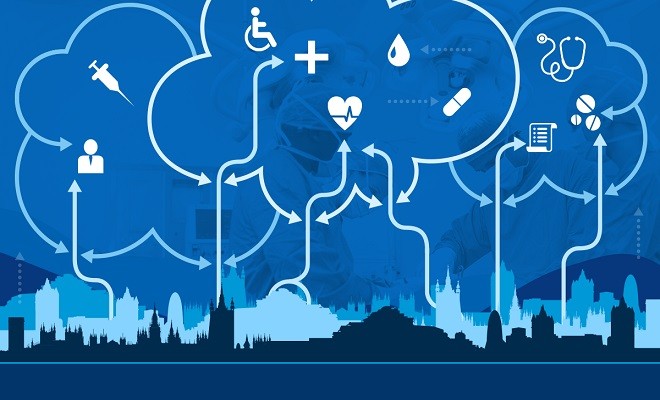Technosphere Labs is a leading organisation providing end-to-end product engineering services and Internet of Things (IoT) connectivity solutions. The company helps its clients to build smart digital products and vertical IoT solutions with multiple sensors and embedded technologies to connect to the cloud.
Bhaskar Rao, CEO, Technosphere Labs talks to EFY bureau on a range of subjects including IoT eco-system in India, development of IoT standards, AI/ML technologies, cloud and edge computing and many more.
Excerpts:
Q. In your opinion, which are the top three technologies that are shaping the future of IoT? How are they influencing the future of IoT?
In my opinion, the top three technologies are:
- Low power MEMS digital sensors: These MEMS sensors led to a reduction in the cost of a solution. These digital sensors make the calibration process simple, enabling large deployments in industrial and environmental applications.
- Low power long range wireless: As there is a large area in many applications including agriculture, industrial, trade shows, campus, etc., it helps to have a long-range wireless network to optimise communication costs and minimise repeaters.
- AI and ML in edge: The ability to perform complex artificial intelligence (AI) and machine learning (ML) functions in the edge enable new use cases that help in optimising communication costs.
Q. Between the cellular and NB-IoT/LPWA families of wireless technologies – which one are you betting upon? Why?
According to me, short-term LPWA technologies will take the limelight due to early adoption and lower power. While LPWA will be suitable for lower data rates, NB-IoT will be appropriate for mid and higher data rates.
Q. How’s the development of standards (or lack of it) affecting the adoption of IoT?
A few standards have taken off, for example MQTT. This standardisation, at API level, makes connecting to different IoT platforms easier. However, adoption is not impacted due to standardisation. Individual IoT platforms are addressing missing standards like security in their own way. For example, Microsoft is providing its own Silicon – Azure Sphere with embedded security and Amazon with its Device Agent Integration.
Q. How ready is India’s tech eco-system to develop and deploy IoT solutions?
India’s tech ecosystem is quite ready. Tech ecosystem in India is well prepared for development and deployment of IoT solutions. The design, manufacturing, connectivity, analytics and user interface (UI) are all available as well as trained team members for each of these disciplines.
Q. Do you foresee India’s tech industry developing its own IP and branded products/solutions in the IoT arena?
Yes. There will be quite a few IPs which will emerge in IoT space from India in the near-term. Being a service-oriented organisation, Technosphere has embarked upon an IP development journey in key areas of smart city and Industrial IoT, which will help our clients to benefit from end-to-end solutions.
Q. Do you see the Open Source phenomenon play an important role in the IoT arena?
In a limited way. Edge computing will use quite a bit of open source since Linux and Android are taking the centre stage. In the cloud, there are several vendors who are offering IoT platforms based on open source. However, device level open source will be limited to maker’s community and custom development will be required to optimise performance, battery life and costs of connected devices.
Q. How do you see the role, technologies like AI/ML will play in the evolution of IoT solutions?
Very much. AI/ML are the tools by which the IoT data can be analysed to benefit an organisation/community. Raw data is of course required, but it will make sense only after analysis. The analysis will help in improving machine up-time, maintenance, cost saving, safety and other important measurable benefits.
Q. What’s your opinion on the state of security available for IoT solutions? How do you see the evolution from hereon, w.r.t threats and counter-measures?
Security is the single biggest threat and concern for rapid acceptance and deployment of IoT. This is being addressed at several layers including at the hardware level and it is now quite robust.
The threats with IoT security should not be treated lightly, since they can potentially shutdown large cities/industries, etc. There is enough importance being given at all layers including the IoT device. IoT security will be as strong as a mobile SIM in the very near future.
Q. W.r.t. edge vs cloud, where do you think will we see faster development in the next year or two?
Both edge and cloud will develop concurrently. However, the end application is very different for the two tracks.
In case of sensors, which are light and not data-heavy, it makes sense to send data to cloud and perform analytics on cloud level. In this case, a simple area border router (ABR) would be adequate instead of a complex Edge Gateway. Devices with small amount of data, would be a good fit for cloud computing, e.g., metering and environmental sensors.
In case of data size being heavy, it is not wise to send all the data to cloud but perform edge-computing to minimise the data traffic and send only summary data to cloud. Edge computing will also be used to consolidate data from smaller sensors and send limited data to cloud, again to minimise cluttering and optimise data storage/transmission.
As the data traffic increases, the trend will shift to more edge computing – primarily driven by operational costs.
Where insights are required at very high granularity, cloud computing with all the data in the cloud server will continue to be relevant.











